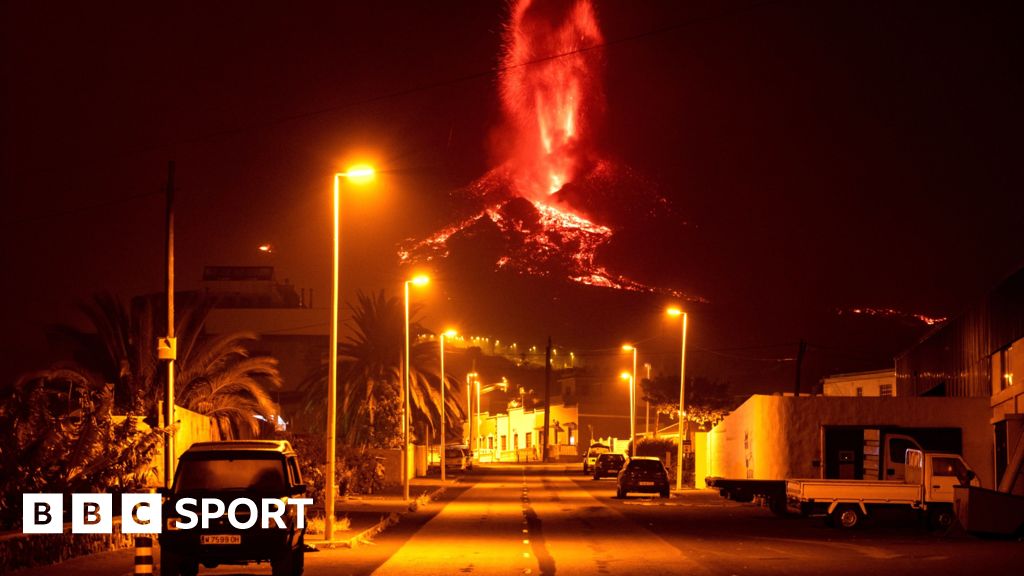
There had been warnings. A cluster of small earthquakes started under the Cumbre Vieja ridge on 11 September.
Then on 19 September, the eruption began a little west of the ridgeline. The first lava flows snaked down slopes.
Homes were evacuated, livestock moved across the island and farmers raced to guard or salvage their crops.
There was little they could do. Houses were swamped, roads barricaded and fields buried by molten flows and layers of ash.
Ten days after the eruption had started, the lava flow completed its 6km (3.7 mile) journey across La Palma, falling, steaming, into the Atlantic Ocean.
La Palma’s previous eruption in 1971, from the south of the same ridge, went on for a month. The 2021 eruption lasted for 85 days.
Having had to cancel the 2020 race because of the coronavirus pandemic, Transvulcania’s organisers were left with no choice but to scratch the 2021 event.
In that moment, it was the least of the island’s worries.
Ultimately more than 7,000 people had to be evacuated and more than 3,000 properties were destroyed, along with farmland covering roughly 1,500 football pitches.
The financial damage was estimated as 862.7m euros (£729m).
Now, though, Transvulcania has returned to help La Palma recover, along with two of Britain’s best trail-runners.